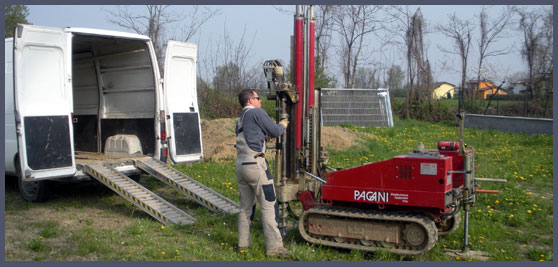
Based on the piling mode of the instrument, the penetration tests are distinguished in:
• static penetration tests
• dynamic penetration tests
The static penetration tests consist to sink into the ground an instrument consisting of a rod tapered tip inserted in a friction sleeve.
The test is done in four phases, during which is possible determinate the soil resistance to the penetration, according to the pressure needed to advance the instrument of 20 cm.
Instead the dynamic penetration tests consist to sink the instrument, leaving fall down a slide hammer with a given weight Q from a certain height H and counting the shots needed to generate a prefixed ditching.
As more numerous are the shots required for the standard ditching as more great is the resistance of crossed soil.
The tests are preferably performed in granular soils (sands and gravels).
Despite of it is possible realize these in any loose soil and even in the case of certain soft rocks; only when we have big stone elements, this type of test loses its meaning.
The values misured during the test allow a qualitative estimate of soil consistency.
It is also possible to estimate, through empirical correlations, the following parameters:
− the relative density (DR), the angle of shear strength (ϕ') and the resistance to liquefaction (τ1/σ'vo) of granular soils
− shear modulus for small deformations (G0)
− undrained shear strenght (cu) of fine-grained soils and soft rocks.
|